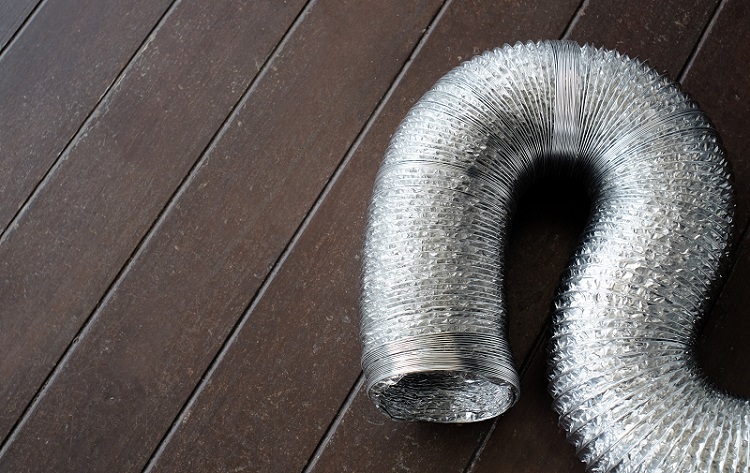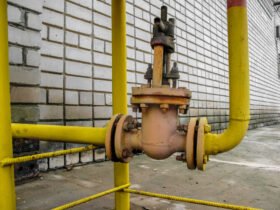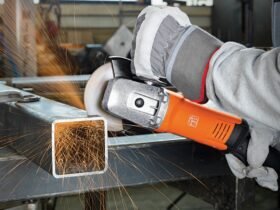In the vast world of industrial ventilation and HVAC systems, flexible ducting stands out as a versatile and practical solution for managing airflow and temperature control. Whether you’re optimizing an existing system or designing a new one, selecting the right flexible ducting can significantly impact your system’s efficiency, performance, and longevity. This comprehensive guide will walk you through the essentials of flexible ducting, helping you choose the perfect option for your industrial needs.
Understanding Flexible Ducting
Flexible ducting is a type of ductwork used to transport air in various industrial applications. Unlike rigid ducts, which are fixed in shape and size, flexible ducts are designed to bend and maneuver around obstacles, making them ideal for complex layouts and tight spaces. They are composed of several layers, including an inner core, insulation, and an outer cover, each contributing to their overall performance.
Key Components:
- Inner Core: Typically made from materials like aluminum or galvanized steel, this component provides structural support and airflow guidance.
- Insulation: This layer, often made from fiberglass or foam, helps maintain temperature and reduce noise.
- Outer Cover: Usually crafted from durable materials such as PVC or foil, the outer cover protects the ducting from physical damage and environmental factors.
Benefits of Flexible Ducting
Flexible ducting offers several advantages that make it a popular choice in industrial settings:
1. Ease of Installation
One of the primary benefits of flexible ducting is its ease of installation:
- Maneuverability: Flexible ducts can be easily bent and shaped to fit around obstacles, reducing the need for complex fittings and adjustments.
- Quick Setup: The flexibility of these ducts allows for faster installation compared to rigid ductwork, which can be time-consuming and labor-intensive.
Installation Tip: When installing flexible ducting, ensure that it is not kinked or pinched, as this can restrict airflow and reduce efficiency.
2. Versatility in Application
Flexible ducting is highly versatile and suitable for various industrial applications:
- HVAC Systems: Ideal for connecting different components of an HVAC system, such as air handlers, diffusers, and registers.
- Ventilation Systems: Used for directing airflow in manufacturing facilities, warehouses, and other industrial environments.
- Dust Collection: Flexible ducts are effective for transporting dust and other particulates from collection points to filtration systems.
Application Example: In a manufacturing plant with multiple machines, flexible ducting can be used to create custom ventilation paths that adapt to the layout and specific needs of each machine.
3. Cost-Effectiveness
Flexible ducting can be more cost-effective compared to rigid alternatives:
- Lower Material Costs: The materials used for flexible ducting are generally less expensive than those used for rigid ducts.
- Reduced Labor Costs: Faster and simpler installation leads to lower labor costs and quicker project completion.
Cost Analysis: For projects where budget constraints are a concern, flexible ducting provides a practical solution without compromising performance.
4. Energy Efficiency
Properly installed flexible ducting can enhance energy efficiency:
- Minimized Air Leaks: High-quality flexible ducts, when installed correctly, can help minimize air leaks and ensure that conditioned air reaches its destination effectively.
- Improved Insulation: Insulated flexible ducts help maintain the temperature of the air being transported, reducing the energy required to heat or cool the air.
Efficiency Tip: Ensure that flexible ducts are properly insulated, especially when running through unconditioned spaces like attics or crawl spaces.
Types of Flexible Ducting and Their Applications
Several types of flexible ducting are available, each suited for specific applications. Here’s a breakdown of the most common types:
1. Flexible Aluminum Ducting
Flexible aluminum ducting is known for its durability and flexibility:
- Construction: Made from layers of aluminum foil and a spiral wire core.
- Applications: Suitable for general ventilation, HVAC systems, and exhaust systems.
Durability: Its resistance to heat and corrosion makes it a reliable choice for various industrial environments.
2. Flexible PVC Ducting
Flexible PVC ducting is lightweight and cost-effective:
- Construction: Made from a single layer of PVC with a spiral wire core.
- Applications: Ideal for low-pressure ventilation systems and general-purpose use.
Flexibility: Its lightweight nature and ease of handling make it suitable for a wide range of applications.
3. Insulated Flexible Ducting
Insulated flexible ducting is designed for temperature control and noise reduction:
- Construction: Includes an inner core, insulation layer, and an outer cover.
- Applications: Used in HVAC systems to maintain temperature and reduce noise, especially in applications with significant temperature fluctuations.
Insulation Benefits: Helps in reducing energy losses and maintaining consistent temperatures.
4. High-Temperature Flexible Ducting
High-temperature flexible ducting is designed to withstand extreme heat:
- Construction: Made from materials such as silicone or fiberglass with a high-temperature resistant core.
- Applications: Suitable for high-temperature processes and exhaust systems in industrial settings.
Heat Resistance: Its ability to withstand high temperatures makes it ideal for applications involving heat-intensive processes.

Factors to Consider When Choosing Flexible Ducting
When selecting flexible ducting for industrial use, several factors should be considered to ensure optimal performance:
1. Diameter and Size
The diameter and size of the flexible ducting should match the requirements of your system:
- Airflow Requirements: Calculate the required duct size based on the volume of air to be transported and the velocity of airflow.
- Space Constraints: Consider the available space and ensure that the chosen ducting can be installed without significant bends or restrictions.
Sizing Tip: Proper sizing is crucial for maintaining efficient airflow and preventing excessive pressure drops.
2. Temperature and Pressure Ratings
Ensure that the flexible ducting you choose can handle the temperature and pressure conditions of your application:
- Temperature Range: Select ducting with an appropriate temperature rating for your specific needs.
- Pressure Tolerance: Ensure that the ducting can handle the pressure requirements of your ventilation or HVAC system.
Rating Check: Verify the temperature and pressure ratings of the ducting to ensure it meets your operational requirements.
3. Material Durability
The durability of the ducting material affects its longevity and performance:
- Corrosion Resistance: Choose materials that are resistant to corrosion and environmental factors.
- Wear and Tear: Consider the potential for physical damage and select ducting with suitable protective features.
Material Choice: Opt for durable materials that can withstand the conditions of your industrial environment.
4. Regulatory Compliance
Ensure that the flexible ducting complies with relevant industry standards and regulations:
- Fire Safety Standards: Verify that the ducting meets fire safety standards if used in environments with high fire risks.
- Energy Efficiency Standards: Check for compliance with energy efficiency regulations to ensure that the ducting contributes to overall system efficiency.
Compliance Check: Adhering to regulations helps in maintaining safety and efficiency in your industrial operations.
Conclusion
Flexible ducting plays a crucial role in industrial ventilation and HVAC systems, offering a versatile, cost-effective, and efficient solution for managing airflow and temperature control. By understanding the benefits, types, and factors to consider, you can select the perfect flexible ducting option for your industrial needs.
From ease of installation and cost-effectiveness to versatility and energy efficiency, flexible ducting provides numerous advantages that make it an indispensable component in modern industrial systems. By following proper maintenance practices and considering factors such as diameter, temperature ratings, and material durability, you can ensure that your flexible ducting performs optimally and contributes to a well-functioning and efficient industrial environment.











Find Us on Socials